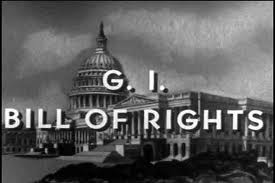Financial Aid and Student Loans
Erika Walker, April 28 2012
Can anyone attend college without receiving some sort of assistance? Perhaps Mitt Romney and his posse could swing it. However, for the rest of us, the answer is a resounding "no.”
The role that financial aid plays in the ability of students to attend college profoundly affects the future of individuals, as well as the country at large. If Barack Obama had not received financial assistance to attend college, he certainly would not have been able to become the President of the United States. Indeed, as he recently acknowledged, he was able to pay off his college loans only eight years ago, at the age of 42.
The rising cost of a college education
In recent decades, the cost of college in the United States has increased to such a degree that it has outpaced the rate of inflation. Since the 17th century, financial aid in the form of scholarships has helped students to attend university, and the assistance has taken many different forms; for the last five or six decades, however, as college has become more unaffordable for the masses, many more and different options for financial aid have become available to students.
The issue has become part of the political landscape: within the last week, Democrats and Republicans have been fighting about whether or not to extend the low interest rates on student loans for college, with the Republicans until recently opposing the extension of a 3% interest rate on such loans. When it became clear that the issue would be a losing one for them, however, they suddenly agreed to the extension. In an election year, it is fascinating to pay attention to the impact that politics has on so many issues that have a direct impact on the lives of so many people.
History of student loans and financial aid
In 1623, the first scholarship for students to attend college was established by a Lady Anne Radcliffe Mowlson for Harvard University. Almost 200 years later, Harvard established the first student program, followed a few decades later by the creation of the Department of Education.
In the twentieth century, many states founded their own scholarship programs as well as other forms of financial assistance, such as fellowships and employment for college students. In 1935, Indiana became the first state to form a student financial aid association.

Following World War II, a tremendous move towards financial assistance to help soldiers returning from war to attend college occurred when the G.I. Bill was enacted in 1944. In 1952, the G.I. Bill was expanded to include veterans from the Korean War.
Since that time, financial assistance to help students attend college has been created by federal, state, and local programs, as well as through private foundations, such as Fulbright scholarships. During the 21st century, the federal government has been responsible for countless programs designed to assist students. However, the interest rates on student loans have swung widely from the time they were established, from a low of 2.8% to a high of 8.5%.
President Obama has focused a significant amount of attention on the issue of financial aid for students--possibly because his own experience has informed him about how crucial such assistance is for citizens everywhere. Most recently, he enthusiastically lobbied for that extension of the 3% interest rate on college loans.
Given the consistently rising costs involved in getting a college education in the United States, it seems nearly impossible to imagine attending without some form of loans, scholarships, or work-study programs.

